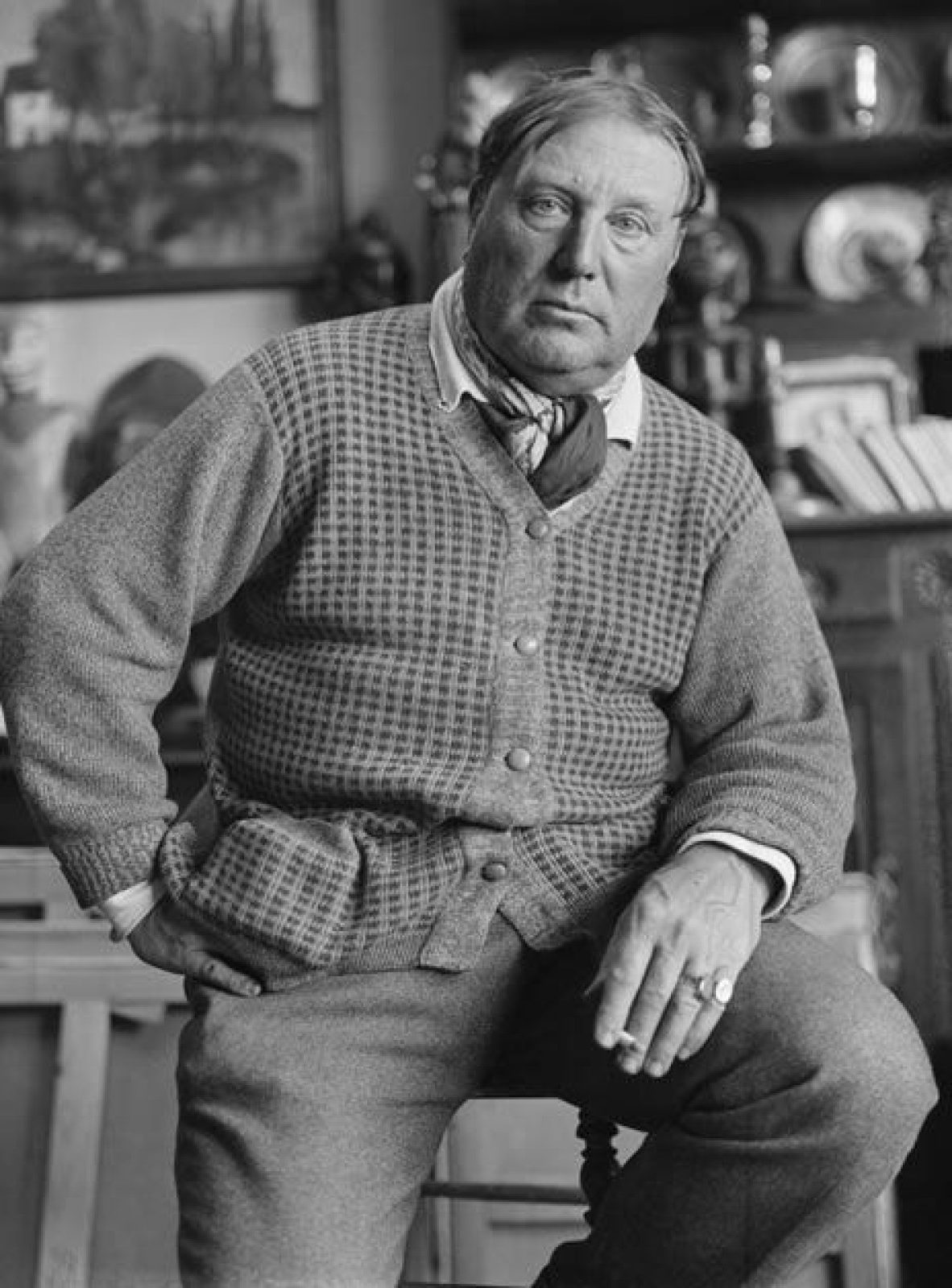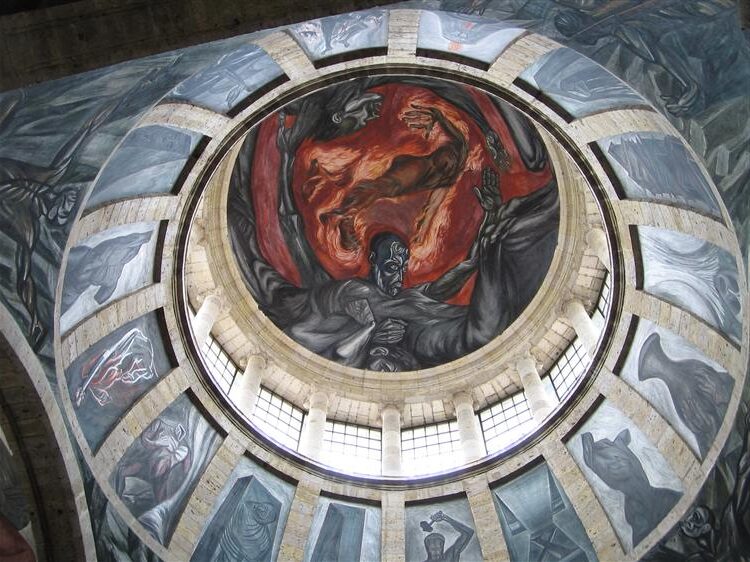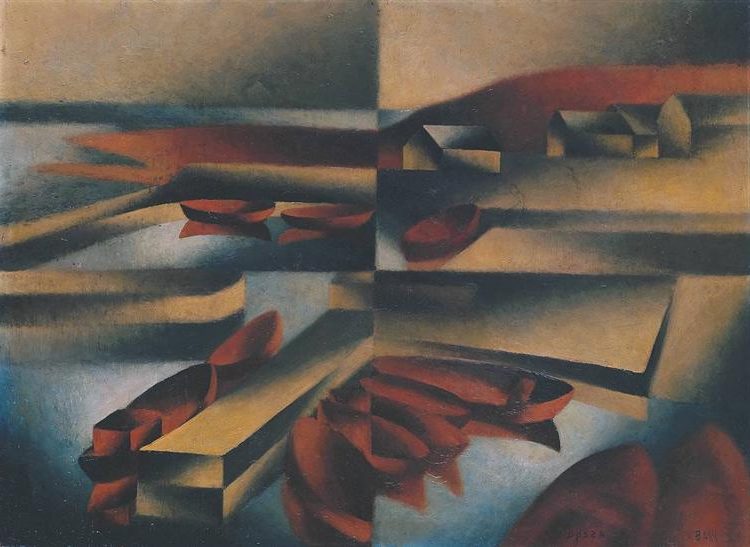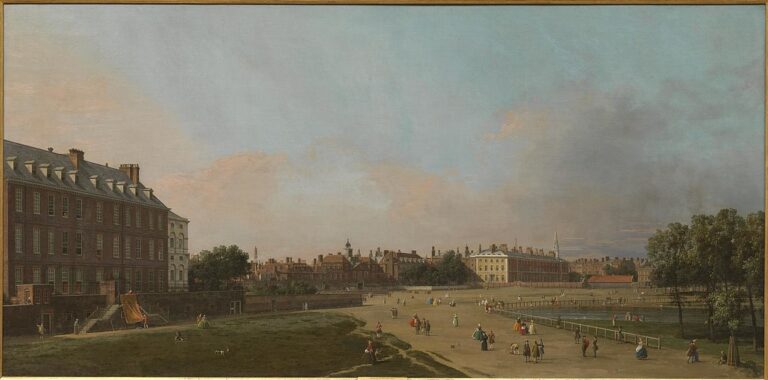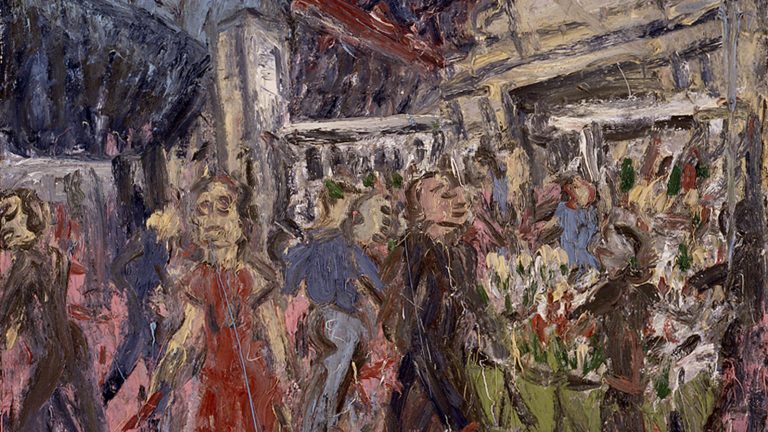Maurice de Vlaminck Painter: Fauvism Pioneer and Expressionist Master
Born: 4 April 1876, Paris, France
Death: 11 October 1958, Rueil-la-Gadelière, France
Art Movement: Fauvism
Nationality: French
Influenced By: Van Gogh and Gauguin
Teacher: Self-Taught
Maurice de Vlaminck Painter: Fauvism Pioneer and Expressionist Master
Early Life and Path to Art
Maurice de Vlaminck was born in Paris in 1876. He grew up in a musical family but found his true passion in painting. His journey to becoming a famous French artist was unique and shaped by various life experiences.
Childhood and Education
Maurice de Vlaminck spent his early years in Paris. His parents were musicians. His father taught violin, while his mother gave piano lessons.
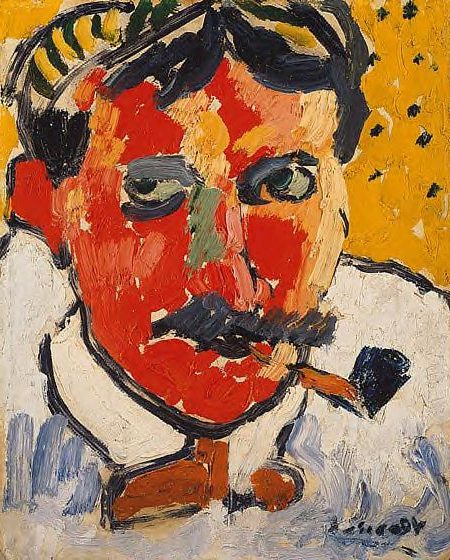
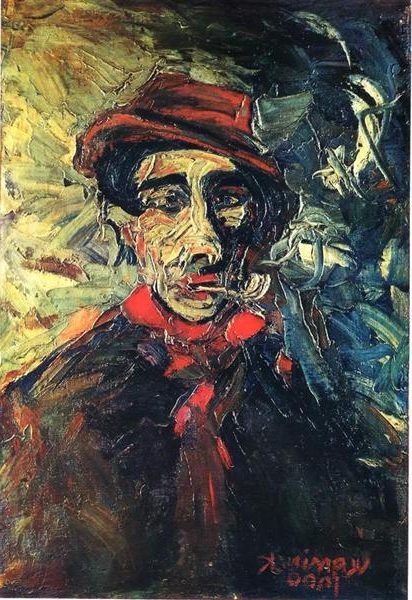
At age three, the family moved to Le Vesinet, a town near Paris.
Young Maurice did not receive formal art training. Instead, he learned about music from his parents. He also picked up cycling as a hobby.
These early interests would later influence his art style.
De Vlaminck’s education was basic. He did not attend art school. This lack of formal training allowed him to develop a unique artistic voice later in life.
Turn to Painting
De Vlaminck’s path to painting was not straightforward. He first tried his hand at various jobs. He worked as a mechanic and even raced bicycles professionally.
A chance meeting with André Derain in 1900 changed his life. Derain, another aspiring artist, became his friend and painting partner. Together, they explored new ways of using color in art.
De Vlaminck began painting seriously around age 23. He was self-taught, learning by studying the works of other artists. His bold use of color and expressive style quickly set him apart.
By 1905, he had become a key figure in the Fauve movement, known for its vivid colors and emotional impact.
Rise of Fauvism and the Fauves
Fauvism emerged in the early 1900s as a bold new art movement. It challenged traditional painting styles with vivid colors and expressive brushwork. Maurice de Vlaminck played a key role in its development.


Foundations of Fauvism
Fauvism began around 1904 in France. Artists like de Vlaminck, André Derain, and Henri Matisse led the way. They rejected subtle tones for bright, unnatural colors straight from the tube.
Their wild style earned them the nickname “Les Fauves” (The Wild Beasts).
The Fauves aimed to capture emotions through color. They used thick brushstrokes and simplified shapes. Landscapes, portraits, and still lifes were common subjects. But the vivid hues made them look unreal and dream-like.
De Vlaminck’s bold paintings stood out even among the Fauves. He often used pure colors without mixing them.
Collaborations and Influences
De Vlaminck and Derain shared a studio in Paris starting in 1901. This partnership sparked new ideas about color and form. They inspired each other to push boundaries in their art.
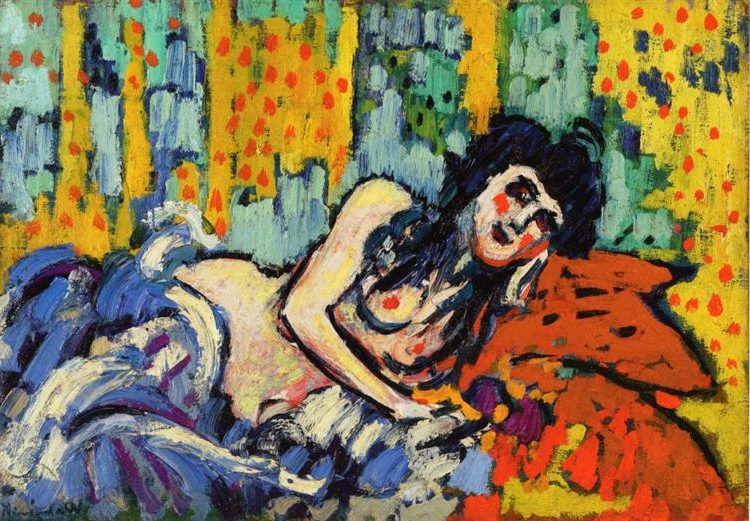
Maurice de Vlaminck’s The Girl from Rat Mort (1905–1906)
The group looked to artists like Van Gogh and Gauguin for inspiration. They admired their expressive use of color. African art also influenced the Fauves’ style.
Matisse joined de Vlaminck and Derain as a leader of the movement. Together, they shaped Fauvism’s distinct look. Their works shocked viewers with their intensity and freedom.
Notable Exhibitions
The 1905 Salon d’Automne in Paris marked Fauvism’s big debut. A room full of bright paintings by de Vlaminck, Matisse, and others caused a stir. Critics called them “wild beasts,” but the name stuck as a badge of honor.
More shows followed, spreading Fauvism’s influence. The 1906 Salon des Indépendants featured many Fauvist works. These exhibitions helped establish Fauvism as a major force in modern art.
De Vlaminck’s bold landscapes drew praise and criticism. His pure colors and thick paint made a lasting impression on the art world.
Artistic Mastery and Major Works
Maurice de Vlaminck’s artistic journey was marked by bold colors, expressive brushwork, and a passion for capturing the essence of landscapes and people. His style evolved throughout his career, leaving a lasting impact on modern art.
Evolution of Style and Technique
Vlaminck began as a Fauvist, using vivid colors and strong brushstrokes. He painted with pure, unmixed colors straight from the tube. This created bright, energetic works that captured emotion over realism.

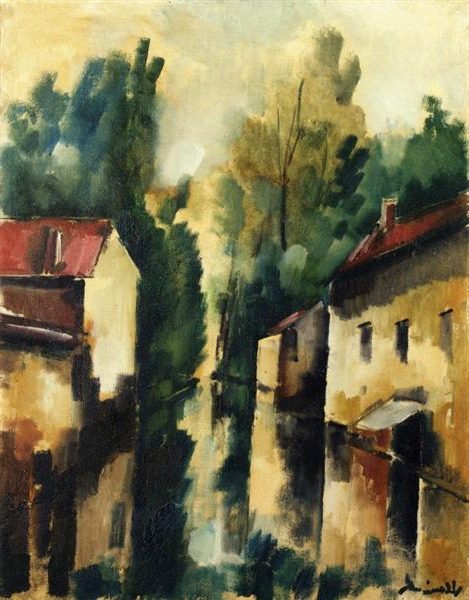
As he grew, Vlaminck’s style changed. He moved away from Fauvism and explored other techniques. His later works showed a darker palette and more structured compositions.
Vlaminck’s brushwork remained bold throughout his career. He often used thick paint applied with quick, forceful strokes. This gave his paintings a sense of movement and energy.
Landscapes and Portraiture
Landscapes were a key focus for Vlaminck. He loved painting the French countryside, especially around Chatou. “The River Seine at Chatou” is a famous example of his landscape work.
Vlaminck’s landscapes often featured vivid skies and trees with twisting branches. He painted scenes from nature with strong emotion rather than exact detail.
Portraits were another important part of Vlaminck’s art. His portrait style was expressive and direct. He captured the personality of his subjects through bold colors and simplified forms.
Influence and Legacy
Vlaminck’s work had a big impact on modern art. His use of color and expressive style inspired many other artists.
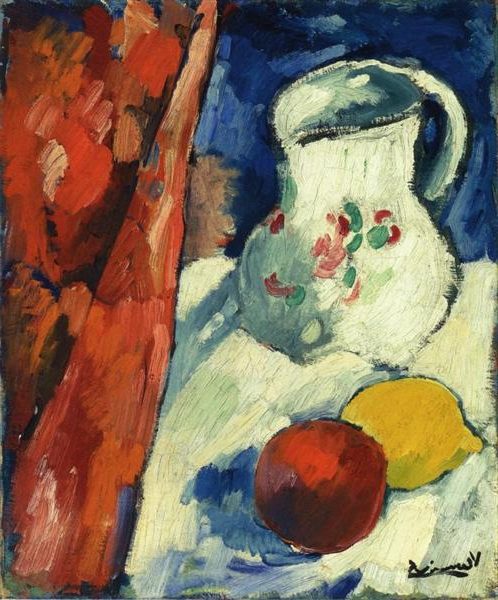
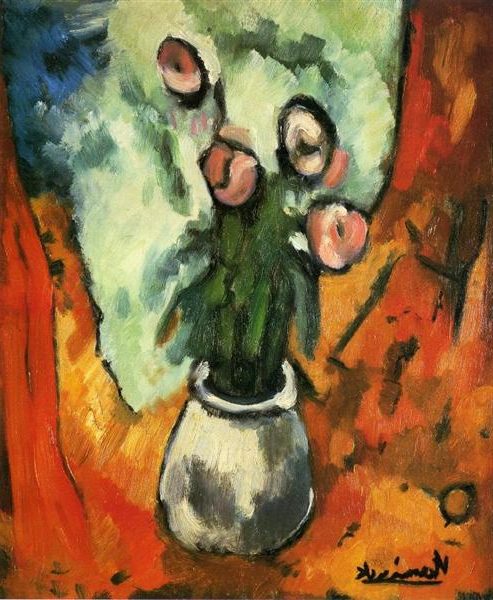
Some of his most famous paintings include “Houses at Chatou” and “Potato Pickers”. These works show his skill in capturing scenes of everyday life with energy and emotion.
Vlaminck’s art is now found in major museums around the world. His bold approach to color and form continues to influence artists today. He helped pave the way for future movements in abstract and expressive painting.
Frequently Asked Questions
Maurice de Vlaminck’s painting style and contributions to Fauvism shaped modern art. His bold colors and expressive brushwork captured rural French scenes and showed the influence of other artists.
What are the characteristics of Maurice de Vlaminck’s painting style?
Vlaminck used bright, intense colors in his paintings. He applied paint in thick strokes with a lot of texture. His style was bold and expressive rather than realistic.
Vlaminck often painted landscapes and rural scenes. He liked to use strong contrasts between light and dark areas in his work.
How did Maurice de Vlaminck contribute to the Fauvism movement?
Vlaminck was a key member of the Fauve group in the early 1900s. He helped develop the movement’s signature style of vivid, unnatural colors.
His paintings from this period feature pure, bright hues straight from the paint tube. Vlaminck’s daring use of color pushed the boundaries of art at the time.
Can you describe the influence of Vincent van Gogh on Maurice de Vlaminck’s artwork?
Van Gogh’s paintings made a big impact on Vlaminck. He admired Van Gogh’s bold colors and energetic brushstrokes.
Vlaminck adopted a similar expressive style in his own work. He used thick paint and swirling brushstrokes like Van Gogh. But Vlaminck’s colors were even brighter and more intense.
What notable themes are present in Maurice de Vlaminck’s ‘The River Seine at Chatou’?
‘The River Seine at Chatou’ shows a river scene with boats and buildings. It captures the light and reflections on the water’s surface.
The painting uses vivid colors to create a lively mood. Vlaminck simplified the forms and focused on conveying the scene’s energy and atmosphere.
How did Maurice de Vlaminck depict rural French life in his work ‘The Potato Pickers’?
‘The Potato Pickers’ shows farm workers in a field. Vlaminck painted the figures with simple shapes and bold outlines.
He used strong colors to convey the sunlight and heat of the scene. The painting captures the hard work of rural life in a direct, expressive way.
Which painting techniques did Maurice de Vlaminck commonly employ in his artwork?
Vlaminck often used thick, impasto paint application. He applied colors straight from the tube without mixing them.
His brushstrokes were loose and energetic. Vlaminck sometimes used a palette knife to create texture. He liked to paint quickly to capture the immediacy of a scene.


